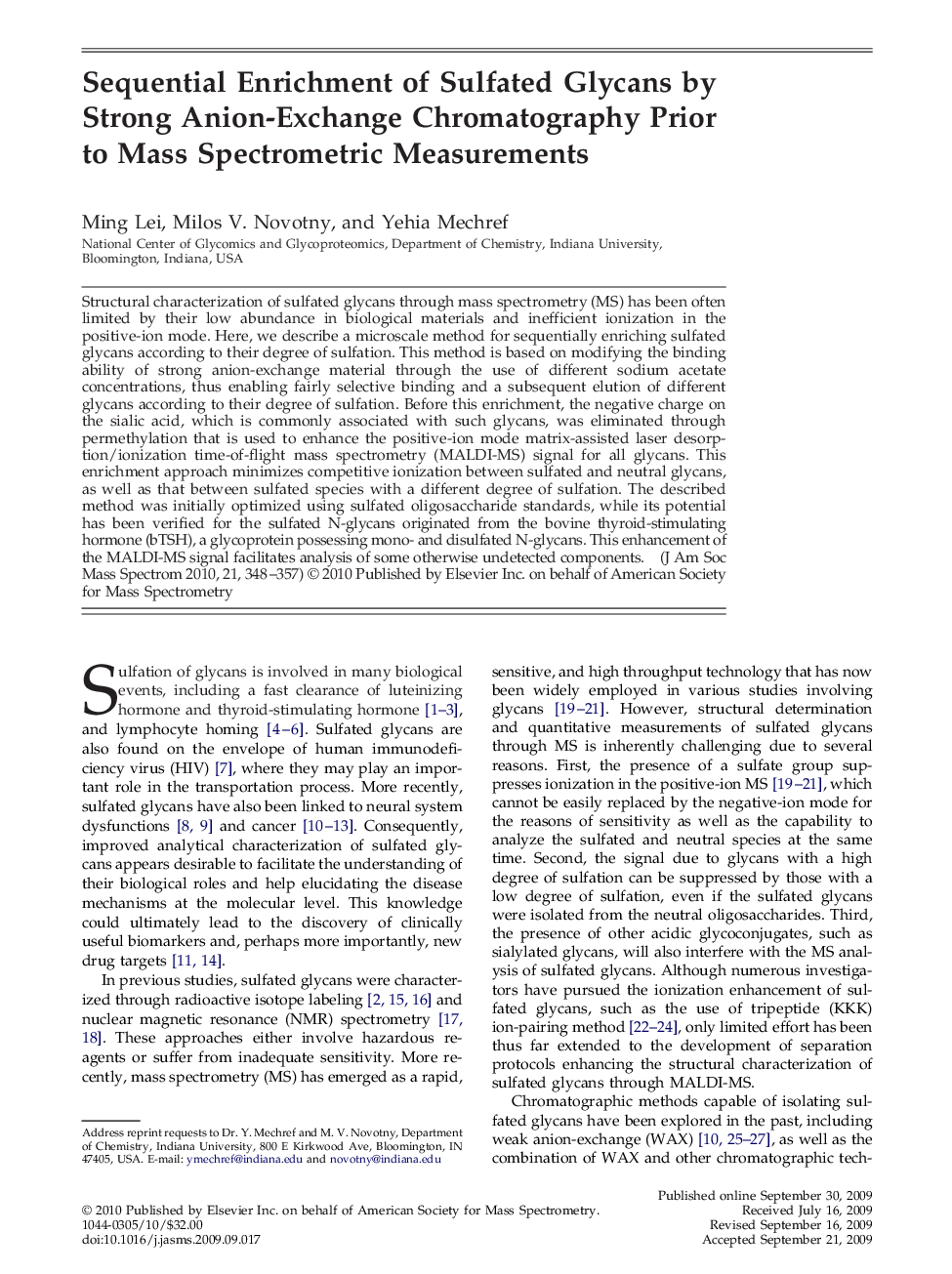| Article ID | Journal | Published Year | Pages | File Type |
|---|---|---|---|---|
| 1196343 | Journal of the American Society for Mass Spectrometry | 2010 | 10 Pages |
Structural characterization of sulfated glycans through mass spectrometry (MS) has been often limited by their low abundance in biological materials and inefficient ionization in the positive-ion mode. Here, we describe a microscale method for sequentially enriching sulfated glycans according to their degree of sulfation. This method is based on modifying the binding ability of strong anion-exchange material through the use of different sodium acetate concentrations, thus enabling fairly selective binding and a subsequent elution of different glycans according to their degree of sulfation. Before this enrichment, the negative charge on the sialic acid, which is commonly associated with such glycans, was eliminated through permethylation that is used to enhance the positive-ion mode matrix-assisted laser desorption/ionization time-of-flight mass spectrometry (MALDI-MS) signal for all glycans. This enrichment approach minimizes competitive ionization between sulfated and neutral glycans, as well as that between sulfated species with a different degree of sulfation. The described method was initially optimized using sulfated oligosaccharide standards, while its potential has been verified for the sulfated N-glycans originated from the bovine thyroid-stimulating hormone (bTSH), a glycoprotein possessing mono- and disulfated N-glycans. This enhancement of the MALDI-MS signal facilitates analysis of some otherwise undetected components.
Graphical AbstractSequential enrichment of sulfated glycans is attained using spin-columns packed with strong anion-exchange media. Approximately 10 mg SAX material was packed in each spin-column.Figure optionsDownload full-size imageDownload high-quality image (128 K)Download as PowerPoint slide
